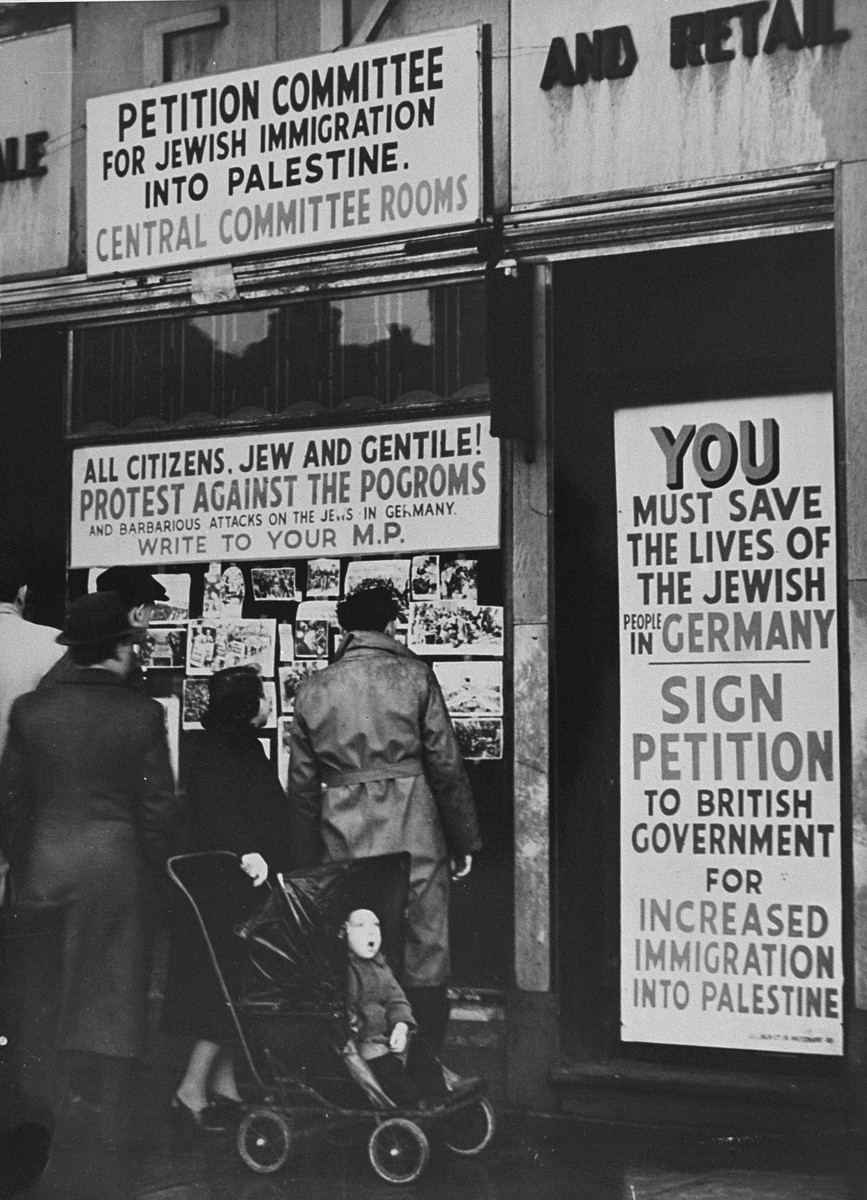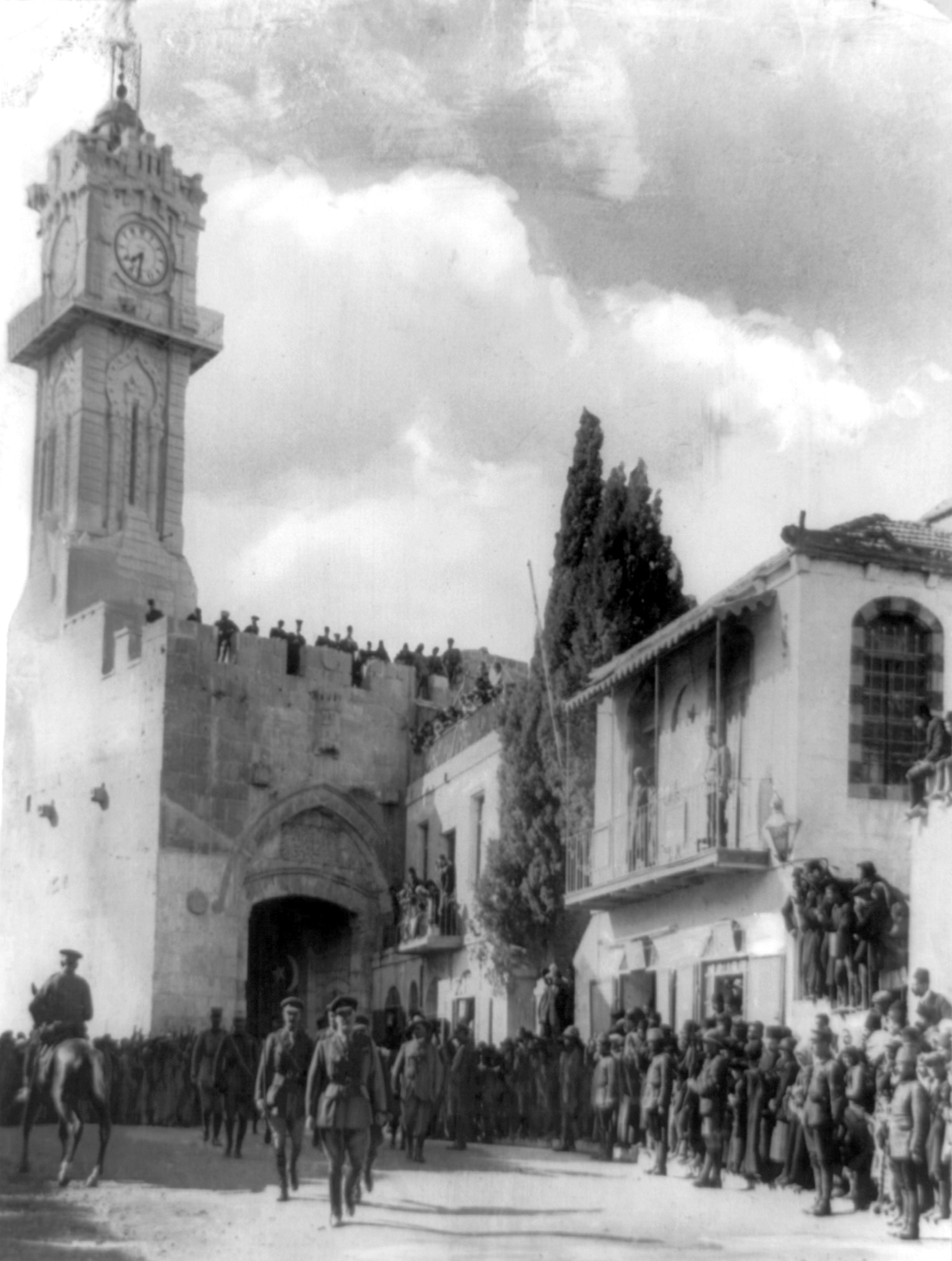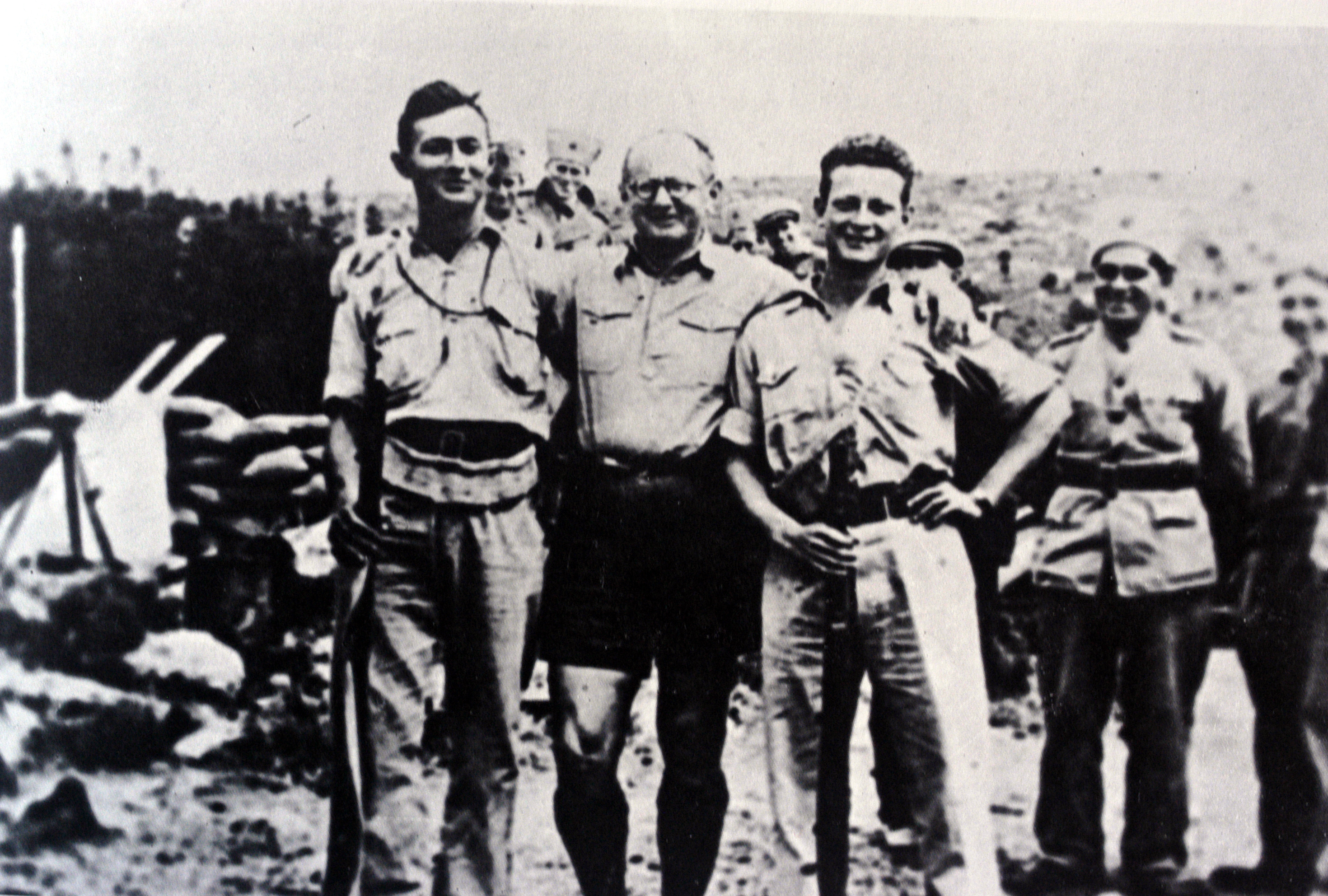|
The Jewish Resistance Movement
The Jewish Resistance Movement (, ''Tnu'at HaMeri Ha'Ivri'', literally ''Hebrew Rebellion Movement''), also called the United Resistance Movement (URM), was an alliance of the Zionist paramilitary organizations Haganah, Irgun and Lehi in the British Mandate of Palestine. It was established in October 1945 by the Jewish Agency and operated for some ten months, until August 1946.Jewish Agency for IsraelHistory of the Jewish Agency for Israel Retrieved on 27 April 2012 The alliance coordinated acts of sabotage to undermine the British authority in Mandatory Palestine. The Zionist Movement had high hopes for the Labour administration elected in Britain after the Second World War. The latter, however, continued to apply the policies laid down in the White Paper of 1939 which included restrictions on Jewish immigration to Palestine. Negotiations began for the formation of the movement in August 1945 at the behest of Haganah leaders Moshe Sneh and Israel Galili. At the end of Oct ... [...More Info...] [...Related Items...] OR: [Wikipedia] [Google] [Baidu] |
Yishuv
The Yishuv (), HaYishuv Ha'ivri (), or HaYishuv HaYehudi Be'Eretz Yisra'el () was the community of Jews residing in Palestine prior to the establishment of the State of Israel in 1948. The term came into use in the 1880s, when there were about 25,000 Jews living in that region, and continued to be used until 1948, by which time there were some 630,000 Jews there. The term is still in use to denote the pre-1948 Jewish residents in Palestine, corresponding to the southern part of Ottoman Syria until 1918, OETA South in 1917–1920, and Mandatory Palestine in 1920–1948. A distinction is sometimes drawn between the '' Old Yishuv'' and the '' New Yishuv''. The Old Yishuv refers to all the Jews living in Palestine before the first Zionist immigration wave (''aliyah'') of 1882, and to their descendants until 1948. The Old Yishuv residents were religious Jews, living mainly in Jerusalem, Safed, Tiberias, and Hebron. There were smaller communities in Jaffa, Haifa, Peki'in, Acre, ... [...More Info...] [...Related Items...] OR: [Wikipedia] [Google] [Baidu] |
White Paper Of 1939
The White Paper of 1939Occasionally also known as the MacDonald White Paper (e.g. Caplan, 2015, p.117) after Malcolm MacDonald, the British Colonial Secretary, who presided over its creation. was a policy paper issued by the British government, led by Neville Chamberlain, in response to the 1936–1939 Arab revolt in Palestine. After its formal approval in the House of Commons on 23 May 1939,by 268 votes to 179. it acted as the governing policy for Mandatory Palestine from 1939 to the 1948 British departure. After the war, the Mandate was referred to the United Nations. The policy, first drafted in March 1939, was prepared by the British government unilaterally as a result of the failure of the Arab–Zionist London Conference. The paper called for the establishment of a Jewish national home in an independent Palestinian state within 10 years, rejecting the Peel Commission's idea of partitioning Palestine. It also limited Jewish immigration to 75,000 for five years and rule ... [...More Info...] [...Related Items...] OR: [Wikipedia] [Google] [Baidu] |
Jerusalem
Jerusalem is a city in the Southern Levant, on a plateau in the Judaean Mountains between the Mediterranean Sea, Mediterranean and the Dead Sea. It is one of the List of oldest continuously inhabited cities, oldest cities in the world, and is considered Holy city, holy to the three major Abrahamic religions—Judaism, Christianity, and Islam. Both Israel and Palestine claim Jerusalem as their capital city; Israel maintains its primary governmental institutions there, while Palestine ultimately foresees it as its seat of power. Neither claim is widely Status of Jerusalem, recognized internationally. Throughout History of Jerusalem, its long history, Jerusalem has been destroyed at least twice, Siege of Jerusalem (other), besieged 23 times, captured and recaptured 44 times, and attacked 52 times. According to Eric H. Cline's tally in Jerusalem Besieged. The part of Jerusalem called the City of David (historic), City of David shows first signs of settlement in the 4th ... [...More Info...] [...Related Items...] OR: [Wikipedia] [Google] [Baidu] |
King David Hotel Bombing
The British administrative headquarters for Mandatory Palestine, housed in the southern wing of the King David Hotel in Jerusalem, were bombed in a terrorist attack on 22 July 1946, by the militant right-wing Zionist underground organization Irgun during the Jewish insurgency in Mandatory Palestine, Jewish insurgency.Encyclopædia Britannica article on the Irgun Zvai Leumi Ninety-one people of various nationalities were killed, including Arabs, Britons and Jews, and 46 were injured.Thurston Clarke, Clarke, Thurston. ''By Blood and Fire'', G. P. Puttnam's Sons, New York, 1981 The hotel was the site of the central offices of the Mandatory Palestine, British Mandatory authorities of Palestine, principally the Secretariat of the Government of Palestine and the H ... [...More Info...] [...Related Items...] OR: [Wikipedia] [Google] [Baidu] |
Palestine Police
The Palestine Police Force (, ) was a British colonial police service established in Mandatory Palestine on 1 July 1920,Sinclair, 2006. when High Commissioner Sir Herbert Samuel's civil administration took over responsibility for security from General Allenby's Occupied Enemy Territory Administration (South). The police force was composed of Jewish, Arab and British officers. Background The Egyptian Expeditionary Force had won the decisive Battle of Gaza in November 1917 under the newly appointed Commander-in-Chief of Palestine, General Sir Edmund Allenby. Following the Battle of Jerusalem in December, Allenby accepted the surrender of the city, which was placed under martial law,Matthew Hughes, ‘Allenby, Edmund Henry Hynman, first Viscount Allenby of Megiddo (1861–1936)’, ''Oxford Dictionary of National Biography'', Oxford University Press, Sept 2004; online edn, May 200accessed 29 May 2007/ref> and guards were posted at several points within the city and in Bethleh ... [...More Info...] [...Related Items...] OR: [Wikipedia] [Google] [Baidu] |
Night Of The Bridges
The Night of the Bridges (formally Operation Markolet) was a Haganah venture on the night of 16 to 17 June 1946 in the British Mandate of Palestine, as part of the Jewish insurgency in Palestine (1944–47). Its aim was to destroy eleven bridges linking Mandatory Palestine to the neighboring countries Lebanon, Syria, Transjordan and Egypt, in order to suspend the transportation routes used by the British Army. Attacks on a further three bridges had been considered, but were not executed. Only one operation failed: the Palmach, the elite fighting force of the Haganah, suffered 14 killed and 5 injured at the Nahal Akhziv bridges, after the group was spotted by Arabs working for the British, who opened fire on them and prematurely detonated the explosives. The other operations succeeded without injuries. One British Royal Engineer was killed while trying to defuse an undetonated bomb the following day. To disguise and protect the real operations and to confuse the British f ... [...More Info...] [...Related Items...] OR: [Wikipedia] [Google] [Baidu] |
Night Of The Trains
The Night of the Trains (or Operation Party) was a sabotage operation of the British railways in Palestine (" Palestine Railways") on November 1, 1945. The operation was one of the first carried out by the Jewish Resistance Movement, before its official establishment, and symbolized its founding. Operation During the operation Palmach units sabotaged a network of railways around the country and blew up three British guard boats in Jaffa port and in Haifa, and a combined Irgun– Lehi unit attacked Lydda railway station, which is the key junction between the Haifa – El Kantara main line and the Jaffa–Jerusalem railway. An estimated 1,000 men were involved in the operations. Approximately fifty Palmach units, which included sappers and guard, severely damaged 153 points along the railway system in Mandate Palestine, primarily at railway junctions and bridges above them. The operations took place around 11:00 p.m., fully synchronized in order to prevent a British respo ... [...More Info...] [...Related Items...] OR: [Wikipedia] [Google] [Baidu] |
Atlit Detainee Camp
The Atlit detainee camp was a internment camp established by the authorities of Mandatory Palestine in the late 1930s on what is now the Israeli coastal plain, south of Haifa. Under British rule, it was primarily used to hold Jews and Arabs who were in administrative detention; it largely held Jewish immigrants who did not possess official entry permits. Tens of thousands of Jewish refugees were interned at the camp, which was surrounded by barbed wire and watchtowers. The camp at Atlit now has a museum that covers the history of ''aliyah'' by non-permitted Jews. It was declared a National Heritage Site by Israel in 1987. History The camp at Atlit, established by the British government in the 1930s, was surrounded by barbed wire and watchtowers. Many of the detainees during the 1930s and 1940s were Jewish refugees from German-occupied Europe. At Atlit camp, the men were sent to one side, women to the other. They were sprayed with DDT, then told to undress and enter the ... [...More Info...] [...Related Items...] OR: [Wikipedia] [Google] [Baidu] |
Aliyah Bet
''Aliyah Bet'' (, "Aliyah 'B'" – bet being the second letter of the Hebrew alphabet) was the code name given to illegal immigration by Jews, many of whom were refugees escaping from Nazi Germany or other Nazi-controlled countries, and later Holocaust survivors, to Mandatory Palestine between 1920 and 1948, in violation of the restrictions laid out in the British White Paper of 1939, which dramatically increased between 1939 and 1948. With the establishment of the State of Israel in May 1948, Jewish displaced persons and refugees from Europe began streaming into the new state in the midst of the 1948 Palestine war. In modern-day Israel, it has also been called by the Hebrew term ''Ha'apala'' (, "Ascension"). Those who underwent Ha'apala are known as ''Ma'apilim.'' The ''Aliyah Bet'' is distinguished from the ''Aliyah Aleph'' ("Aliyah 'A'", Aleph being the first letter of the Hebrew alphabet) which refers to the limited Jewish immigration permitted by British authorities d ... [...More Info...] [...Related Items...] OR: [Wikipedia] [Google] [Baidu] |
Eitan Livni
Yeruham "Eitan" Livni (; 1 April 1919 – 27 December 1991) was a Revisionist Zionist activist, Irgun commander and Israeli politician, father of Israeli politician Tzipi Livni. Life and career Livni was born in Grodno, Poland (now in Belarus) on 1 April 1919 to Yitzhak and Dvora. His family moved to Mandatory Palestine in 1925 and settled in Tel Aviv. He went to High School and Trade School in Tel Aviv, and in 1938, he joined the Betar movement at Zikhron Ya'akov, where he was assigned to agricultural work and guard duty. Soon after, he joined the Irgun, and a year later, he was summoned to a commanders course at Tel Tzur (near Binyamina). When the Irgun proclaimed the Jewish insurgency in Mandatory Palestine in February 1944, he was put in charge of the Irgun activities, and was later appointed to the General Headquarters as chief operations officer. He was arrested on April 4, 1946, for his participation in the sabotage operation against British railroads called " Night of t ... [...More Info...] [...Related Items...] OR: [Wikipedia] [Google] [Baidu] |
Palmach
The Palmach (Hebrew: , acronym for , ''Plugot Maḥatz'', "Strike Phalanges/Companies") was the elite combined strike forces and sayeret unit of the Haganah, the paramilitary organization of the Yishuv (Jewish community) during the period of the British Mandate for Palestine. The Palmach was established in May 1941. By the outbreak of the 1948 Arab–Israeli War, it consisted of over 2,000 men and women in three fighting brigades and auxiliary aerial, naval and intelligence units. With the creation of Israel's army, the three Palmach Brigades were disbanded. This and political reasons compelled many of the senior Palmach officers to resign in 1950. The Palmach contributed significantly to Israeli culture and ethos, well beyond its military contribution. Its members formed the backbone of the Israel Defense Forces high command for many years, and were prominent in Israeli politics, literature and culture. Background The Palmach was established by the Haganah High Command in ... [...More Info...] [...Related Items...] OR: [Wikipedia] [Google] [Baidu] |
Yitzhak Sadeh
Yitzhak Sadeh (; born Izaak Landoberg, August 10, 1890 – August 20, 1952), was the commander of the Palmach and one of the founders of the Israel Defense Forces at the time of the establishment of the State of Israel. Biography Sadeh was born as Izaak Landoberg to a Polish Jewish family in Lublin, in the Russian Partition of the Russian Empire (now in Poland). His mother, Rebecca, was the daughter of rabbi Shneur Zalman Fradkin. In his youth, he studied with rabbi Hillel Zeitlin. Sadeh married three times. His third wife, Margot Meier-Sadeh, died of cancer a year before he did. He had two daughters, Iza Dafni and Rivka Sfarim, and a son, Yoram Sadeh. Sadeh died in Tel Aviv in August 1952. By then he had become a charismatic and colorful figure whose nickname in the Palmach was ''HaZaken'' (The Old Man). He is buried at Kibbutz Givat Brenner. Military career When World War I broke out, he joined the Imperial Russian Army. He saw action and was decorated for bravery. In 191 ... [...More Info...] [...Related Items...] OR: [Wikipedia] [Google] [Baidu] |








